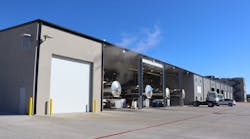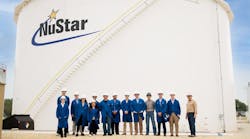Construction spending in June declined from May but increased from a year ago as public investment shrank for nearly every type of structure, according to an analysis of new government data by the Associated General Contractors of America. Association officials cautioned that the significant declines in public-sector construction spending come at a time when much of the nation's public infrastructure is deteriorating due to age or overuse.
"Construction spending is still increasing overall but growth has become much more uneven across categories in recent months," said Ken Simonson, the association's chief economist. "There has been a steep decline in public investment in nearly all types of construction over the past year. Private nonresidential construction is still rising overall but generally at slower rates than was occurring a few months ago."
Construction spending in June totaled $1.206 trillion at a seasonally adjusted annual rate, a drop of 1.3% from the downwardly revised May total and up just 1.6% from a year earlier, Simonson said. He noted that every public spending category recorded a decrease for the month and nearly all were lower than a year ago, while multifamily construction and several private nonresidential categories also declined or had smaller increases than previously.
Public construction spending plunged 5.4% from the prior month and 9.5% from June 2016 to June 2017. The spending rate in June was the lowest seasonally adjusted rate since February 2014. The biggest public segment—highway and street construction—slumped 8.1% from a year earlier. Among other major public infrastructure categories, spending on transportation facilities such as transit and airport construction dropped 3.9% year-over-year; spending on sewage and waste disposal plummeted 16.1%; and spending on water supply fell 17.7%. Public spending on educational structures declined 7.3% from a year ago.
Private nonresidential spending inched up 0.1% for the month and 1.1% over 12 months. The largest private nonresidential segment was power construction (including oil and gas field and pipeline projects), which dropped 5.4% from June 2016 to June 2017. The next-largest segment, commercial (retail, warehouse and farm) construction, climbed 13.8% year-over-year. Manufacturing construction declined 7.7% for the year. Private office construction increased 12.6% since June 2016.
Private residential construction spending slipped by 0.2% between May and June 2017 but gained 9.2% over the year. Spending on multifamily residential construction edged up 0.6% from a year ago, while single-family was up 9.0% from the June 2016 rate.
Association officials urged congress and the Trump Administration to work together to enact new measures to fund and finance needed upgrades to the nation's aging infrastructure. They noted that these investments are necessary to protect against further deterioration of the nation's public works. And they added that the new investments would help offset slackening demand for construction.
"Washington officials need to act quickly to rebuild our public works before bad roads, unclean water, and unreliable power systems begin to serve as a drag on broader economic growth," said Stephen E Sandherr, the association's chief executive officer.








